- Home
- Orhan Pamuk
Istanbul Page 23
Istanbul Read online
Page 23
CHAPTER TWENTY-NINE
Painting and Family Happiness
Whenever I entered the Cihangir apartment my mother had arranged for me to use as a studio, I would huff and puff until I had lit the gas stove. (When I was eleven years old and living in this same apartment with my family, I’d been a committed pyromaniac—lighting fires wherever and whenever I could—but only now did I notice that this joy had left me long ago without so much as a goodbye.) By the time the high-ceilinged apartment was warm enough to take the chill off my hands, I’d have put on my paint-splattered smock—this more than anything defined me as someone who’d been painting for some time. It was, nonetheless, a somewhat mournful prospect, escaping into a painting I would not be able to show anyone, certainly not at once, though perhaps in one or two days. I’d turned the apartment into a gallery—my paintings hung on every wall—but no one, not my mother or even my father, ever came to admire them. And so it was in this apartment that I discovered a need not only to know my paintings would be seen, but also, while painting, to feel the presence all around me of those who’d be judging my work later. To be standing in a gloomy apartment full of chilly old furniture that smelled of dust and mold, painting scenes of Istanbul, made me feel gloomy too.
I would give a great deal if I could put my hands on some of those paintings (now lost) I did at home between the ages of sixteen and seventeen, depictions of “family happiness” in what we might call the Tolstoyan sense of the phrase. These paintings were hugely significant to me because—as you can see from the picture below, taken by a professional photographer who came to the house when I was seven—I sometimes had difficulty maintaining the “happy family” pose. Abandoning my usual Istanbul views and back streets, I painted “us” while my parents moved around me, doing the things they did every day. It was when tensions between my parents had softened somewhat—when no one was needling anyone else, and everyone was relaxed, and the radio or maybe a tape was playing in the background, when the maid was bustling in the kitchen as she cooked our supper, or just before we all set out together on an outing or a trip—that I would do these paintings, always in a single flash of inspiration.
My father would usually be stretched out on the sofa in the sitting room: It’s where he spent most of his time at home, reading newspapers, magazines, or books (not the literary novels he’d enjoyed in his youth but books about bridge) or staring distractedly at the ceiling. If he was in a good mood and had put some orchestral music on the tape deck, say Brahms’s First Symphony, he’d stand up on occasion to direct an imaginary orchestra, waving his arms as conductors do, which to me seemed angry, impatient, and obsessed. My mother, in her armchair right next to him, would raise her eyes from her newspaper or her knitting, with a smile, it seemed, of something between compassion and love.
It was an arrangement devoid of arresting detail, provoking no discussion, but this was why it attracted my attention. When this tableau made one of its rare appearances, I would whisper, “I’m going to do a painting” in a half-joking, half-ashamed voice, as if talking to a jinn that had taken up residence inside me; I would then rush to my room and grab my painting things—my oils or the 120 Guitar pastels my father had brought from England and a few sheets of the multicolored Schöler paper my aunt gave me every year for my birthday—and return to the sitting room, to arrange my father’s desk in such a way that I could see them both when I sat down to dash off, very quickly, a picture of home.
Through it all, neither my father nor my mother would speak, and because they responded naturally to my sudden and irrepressible desire to do a painting, it seemed to me as if God had briefly stopped time just for me. (In spite of my general lack of interest, I still believed that She came to my aid at important moments.) Or perhaps my mother and father looked happy because they weren’t speaking. For me, the thing called family was a group of people who, out of a wish to be loved and feel peaceful, relaxed and secure, agreed to silence, for a while each day, the jinns and devils inside them and act as if they were happy. Often as not they did so because they couldn’t think of anything better to do and managed, in the end, to be convinced by their own pretense, but if, after holding the happy poses for some time, they had not been quite able to put their jinns and devils to sleep, my father’s eyes would wander from the pages of his book as my mother continued her knitting with composed resignation and, looking out the window at the Bosphorus in the distance as though indifferent to its beauty, lose himself in thought. A magical silence would descend over the room as my mother and father stretched out, perfectly still, not saying a word but expressing what seemed a shared anguish; later, in the seventies, when like everyone else in the country we bought a television set and they somewhat sheepishly surrendered to its entertainments, there were no magical silences, and I never again had the desire to paint them. Because for me happiness occurred when the people who loved me were suppressing their demons and I was free to play.
Though they were posing as if for a photograph, not moving a muscle as my hand raced ever faster to finish my happy family scene, sometimes they conversed. One would mention something in the paper, and after a long silence, the other would offer up an analysis or say nothing at all. Sometimes my mother and I would be talking, and my father, who’d been lying on the sofa showing no interest in our conversation, would suddenly pipe up and prove he’d been listening all along. Sometimes, if one of us looked out the wide windows of our apartment in Beşiktaş Serencebey to see a strange and terrifying Soviet ship making its way up the Bosphorus, or if it was spring and a flock of storks on their way north from Africa crossed the sky, the long silence would be broken by a short superfluity, as in, “Those are storks!” But much as I loved these silences that fell over our sitting room, when we all sank into our own little worlds, I recognized the transience of their peace and happiness. Adding the finishing touches to my painting, I would notice fearsome details of my parents’ bodies that I had missed altogether until seeing them with a painterly eye. I would look at my mother in her glasses, an expression half happy, half hopeful on her face, and at the yarn hanging from the knitting needles from which it dipped down first to her lap, then to her feet and into the plastic bag holding the skein. Next to this transparent bag, no less still when she was talking to my father than when she was lost in thought, was her slippered foot, and as I studied it long and carefully, a strange shiver would pass through me. There was something about people’s arms, legs, and hands, something even about heads, that was lifeless, stolid as the vases in which my mother put gypsy holly—kokino—inanimate as the small table at her side or the Iznik plates she hung on the wall. Even though we had managed a happy family tableau, and even though I’d succeeded in suspending my disbelief, when the three of us sat, each in his own corner, something made us look like just three more pieces of furniture my grandmother had crammed into her museum room.
I reveled in these shared silences, which were as rare and precious as playing “the priest has run away” on special occasions, and our New Year’s games of lotto. As I filled the page with, I imagined, Matisse’s swift brushwork, dotting the carpets and curtains with the same little curves and arabesques Bonnard used in his domestic interiors, the sky outside would grow darker and I would notice that the light from the three-legged lamp next to my father had grown brighter. When evening had arrived for certain and the sky and the Bosphorus had assumed their deep gorgeous purple, and the light of the lamp had turned orange, I’d see that the windows no longer looked out over the Bosphorus or the car ferries or the ship crossing from Beşiktaş to Üsküdar or the smoke coming out of the chimneys of ships, but instead reflected upon us the inside of our house.
Either walking through the streets in the evening or looking out the window, I still loved looking through the orange halo of the streetlamps into other people’s houses. Sometimes I’d see a woman sitting alone at a table reading her own fortune, striking just the same pose my mother did on those long winter evenings when
my father did not come home, smoking cigarettes and patiently playing Patience. Sometimes I’d look into a humble little ground-floor apartment to see a family eating supper and talking all at once under the same orange light as in our house, and as I gazed at them from the outside I’d innocently decide they must be happy. Happy families viewed through windows—these are the pictures that tell us about our city; but in Istanbul, where, especially in the nineteenth century, visitors were rarely admitted to any room but the parlor, foreigners are seldom able to make sense of what they see.
CHAPTER THIRTY
The Smoke Rising from Ships on the Bosphorus
In the mid-nineteenth century, steamships revolutionized sea travel, bringing closer the great cities of Europe; it made short visits to Istanbul possible. In time, some of those who committed their impressions to paper would inform a new idea of Istanbul created by a handful of local writers; but from the moment of their arrival, these steamships gave the city a new look. A company initially trading under the name of Şirket-i Hayriye and later known as Şehir Hatları (City Lines) was set up, and soon every Bosphorus village had its own landing stage; as the ferries began to ply the strait, the city took on a faintly European aspect. (Let us remember that vapeur, the French word for steam, found its way into Istanbul Turkish and everyday life to become vapur, our word for ship.) Among the changes ferries brought with them were the busy meydans that grew up around the landing stages of the Bosphorus and the Golden Horn or the rapid growth of these villages that soon made them part of the city proper. (Until the ferries arrived, there were hardly any roads connecting them.)
As ferries began to carry passengers up and down the Bosphorus, they became as familiar to İstanbullus as Kızkulesi, Hagia Sophia, Rumelihisarı, and the Galata Bridge; soon they were such a part of everyday life that they assumed an almost totemic importance. Just as others become attached to Venice’s vaporettos and love to show off their knowledge of the various shapes and models, so too do İstanbullus dote on each and every ferry ever owned by City Lines; there are whole books devoted to them, complete with illustrations. Gautier wrote that every barber in Istanbul had a picture of a ferry hanging on his wall. My father could recognize every one put into service in his childhood just by its splendid silhouette, and if he couldn’t remember at once, a moment later he would be reciting the names that still sound like poems to me: Fifty-three İnşirah, Sixty-seven Kalender, Forty-seven Tarz-I Nevin, Fifty-nine Kamer.…
When I asked him how he could distinguish ships that looked so much alike, he would enumerate the special features of each—say, when we had gone out for a drive along the Bosphorus or, if traffic made that impossible, in the sitting room of our house in Beşiktaş; but even after he had identified the uniqueness of each ship—this one had a hump, that one had an extra-long chimney, another had a hooked nose or a plump behind or leaned slightly to one side in a swift current—I still could not, even after close study, tell any of them apart. But I did learn to distinguish the three ferries—two made in England and the other in Taranto, Italy, in 1952, the year of my birth—that were named after gardens; after studying their shapes and the width of their chimneys, I was finally able to tell the Fenerbahçe and the Dolmabahçe from the Paşabahçe, which I came to see as my lucky ship, so that whenever I happened to be walking through the city lost in thought and caught a glimpse of it when I looked down an alley or out the window, I would feel a little lift: I still do today.
The ferries’ great gift to the skyline is the smoke from their funnels. I loved painting in their coal-dark clouds, which varied according to the ferry’s position and make, the sway of the great Bosphorus currents, and, of course, the wind. Before I put in the smoke coming out of the funnels with my frayed paintbrush, the painting had to be completely finished, even half dry. Like the signature I would later place into the lower righthand corner, the smoke coming out of a particular funnel seemed to me to be that ferry’s special stamp. When the smoke thickened into a cloud, especially when rising from all the funnels of all the ships moored around Galata Bridge, it was as if my world was being wrapped in a black veil. Walking along the shores of the Bosphorus or traveling on a ferry, I loved passing under the swirling smoke of a vessel long departed. If the wind was right, a dry rain of millions of tiny black particles with the smell of burnt mineral would settle on my face like a cobweb.
Often, after I had brought a painting to a happy close and crowned it with just the right amount of smoke coming out of the ferries’ funnels (sometimes I’d put in too much smoke and ruin the picture), I would consider the other ways I had observed smoke swirl, broaden out, and vanish, and then I’d file these images away, as if for future use. But with the last brushstrokes, the canvas before me would have so thoroughly assumed its own reality that I’d have already forgotten what I’d seen with my own eyes, what the smoke looked like in its true and natural form.
I find the perfect column of smoke comes with a light breeze, and after the smoke has for a time been rising at a 45-degree angle, it begins to run parallel with the ship without changing shape, as if someone has drawn an elegant line in the sky to indicate the ferry’s course. The thin column of coal-dark smoke rising from a ferry docked on a windless day reminds me of smoke rising up from the little chimney of a hovel. When the ferry and the wind have changed direction just slightly, the smoke rising from the funnel begins to swoop and swirl over the Bosphorus like Arabic script. But whenever I painted a Bosphorus scene with a City Lines ferry, I needed the smoke to convey the melancholy of the scene, so this joyful accidental shape, as much as I admired it, troubled me. On a day without wind, when dark smoke rising powerfully from a funnel lingers in the sky, there was an undeniable record of the melancholy the ferry had left in its wake as it curled its way from shore to shore. I loved to see thick black smoke sitting on the horizon and merging with the threatening clouds behind it, as in a Turner painting. But still, when finishing a painting with one or perhaps several ferries to furnish with smoke, it was not the shades of smoke I’d seen from the ferries themselves, but the smoke I’d seen in Monet, Sisley, and Pisarro that I called to mind—the bluish cloud in Monet’s Gare Saint-Lazare or the happy ice-cream-scoop clouds from the very different world of Dufy—and that’s what I’d paint.
In the opening lines of Sentimental Education, Flaubert has a beautiful description of smoke changing shape, and that is one of the reasons I love him. (There are other reasons too.) Here we end our hymn to smoke; by using this passage as a bridge to the next melody, I have executed what was known in traditional Ottoman music as an ara taksim. The word taksim can mean to divide, to gather, or to channel water, and this is why the great field where Nerval saw vendors and cemeteries (and which also served as a water distribution center) came to be known to İstanbullus as Taksim. They still know it by the same name, and I’ve lived around it all my life. But it was not yet known as Taksim when Flaubert and Nerval passed through.
CHAPTER THIRTY-ONE
Flaubert in Istanbul: East, West, and Syphilis
In October 1850, seven years after Nerval’s visit to Istanbul, Gustave Flaubert arrived with his friend Maxime du Camp, the writer and photographer, as well as the case of syphilis he’d just caught in Beirut. He stayed here almost five weeks, and though, in a letter from Athens to Louis Bouilhet, he said, “One would have to stay [in Istanbul] at least six months,” we should not take his claim too seriously, as Flaubert was a man who missed everything he left behind. As we can see very clearly from the letters carrying Constantinople next to the date, what he had been missing most since setting out on his journey was his house in Rouen, his study, and his dear mother, who’d wept copiously at his departure, and his dearest wish was to get home as soon as he could.
Following Nerval’s itinerary, Flaubert had come to Istanbul via Cairo, Jerusalem, and Lebanon. Like Nerval, he’d grown tired of the harsh frightening ugliness and mystical exoticism of the East he glimpsed in these places; already bored with his own fanta
sies and overcome by the realities, which were more “oriental” than his dreams, he took little interest in Istanbul. (His original plan was to stay here for three months.) In fact, Istanbul was not the East he was looking for. In another letter to Louis Bouilhet, he recalled Lord Byron traveling through western Anatolia. The East that captured Byron’s imagination was “the Turkish Orient, the Orient of the curved sword, the Albanian costume, and the barred window looking on the blue sea.” But Flaubert preferred “the baked Orient of the Beduin and the desert, the vermillion depths of Africa, the crocodile, the camel, the giraffe.”
Of all the places the twenty-nine-year-old writer had seen on his eastern voyage, it was Egypt that had fired his imagination, as it would do for the rest of his life. As he explained in letters to his mother and to Bouilhet, his mind was now on the future and the books he wished to write. (Among the imagined books was a novel called “Harel Bey,” in which a civilized Westerner and an eastern barbarian slowly come to resemble each other, finally changing places.) From what he wrote to his mother, it is clear that all the elements later to form the Flaubert myth—his refusal to take seriously anything other than art, his contempt for bourgeois life, marriage, and making a living from trade—were already in place. A hundred years before my birth, as he was wandering the streets in which I would spend my life, a thought came to him that he would later set down on paper, and it would become one of the basic moral principles of modernist literature: “I care nothing for the world, for the future, for what people will say, for any kind of establishment, or even for literary renown, which in the past I used to lie awake so many nights dreaming about. That is what I am like; such is my character.” (Letter from Flaubert to his mother, December 15, 1850, Istanbul.)

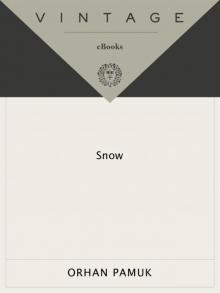 Snow
Snow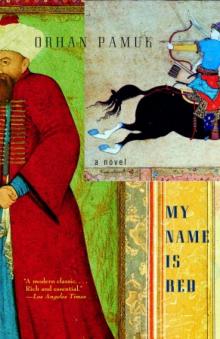 My Name is Red
My Name is Red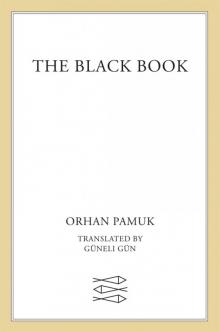 The Black Book
The Black Book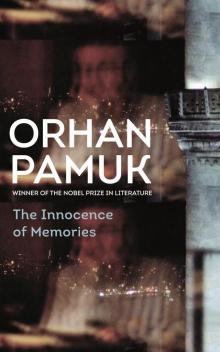 The Innocence of Memories
The Innocence of Memories The White Castle
The White Castle Other Colors
Other Colors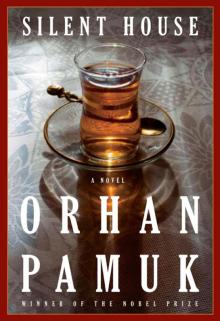 Silent House
Silent House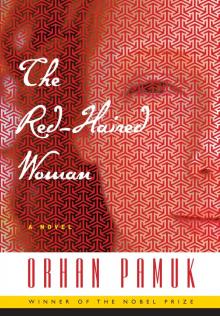 The Red-Haired Woman
The Red-Haired Woman The Museum of Innocence
The Museum of Innocence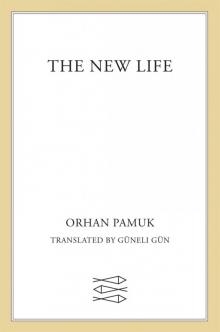 The New Life
The New Life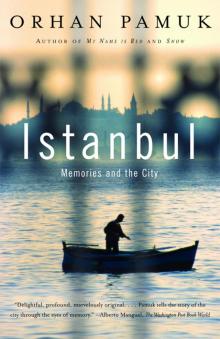 Istanbul
Istanbul